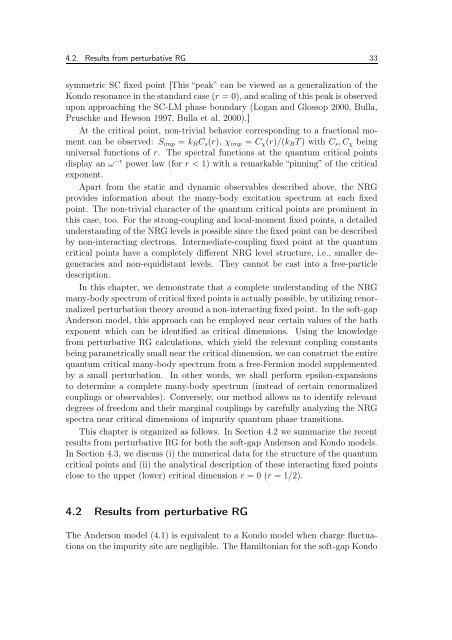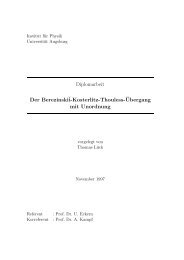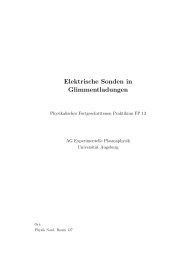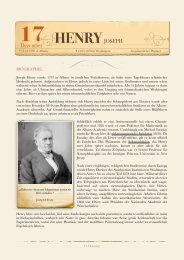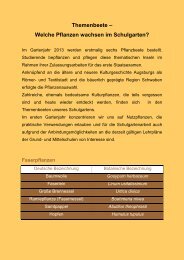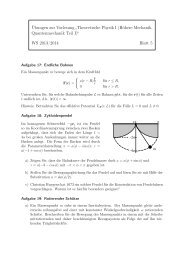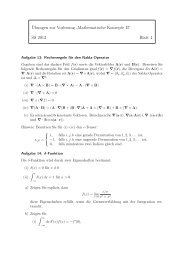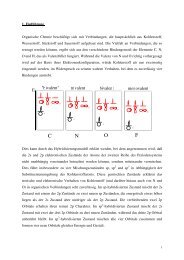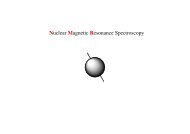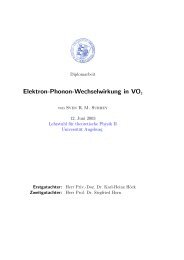Numerical Renormalization Group Calculations for Impurity ...
Numerical Renormalization Group Calculations for Impurity ...
Numerical Renormalization Group Calculations for Impurity ...
Create successful ePaper yourself
Turn your PDF publications into a flip-book with our unique Google optimized e-Paper software.
4.2. Results from perturbative RG 33<br />
symmetric SC fixed point [This “peak” can be viewed as a generalization of the<br />
Kondo resonance in the standard case (r = 0), and scaling of this peak is observed<br />
upon approaching the SC-LM phase boundary (Logan and Glossop 2000, Bulla,<br />
Pruschke and Hewson 1997, Bulla et al. 2000).]<br />
At the critical point, non-trivial behavior corresponding to a fractional moment<br />
can be observed: S imp = k B C s (r), χ imp = C χ (r)/(k B T) with C s , C χ being<br />
universal functions of r. The spectral functions at the quantum critical points<br />
display an ω −r power law (<strong>for</strong> r < 1) with a remarkable “pinning” of the critical<br />
exponent.<br />
Apart from the static and dynamic observables described above, the NRG<br />
provides in<strong>for</strong>mation about the many-body excitation spectrum at each fixed<br />
point. The non-trivial character of the quantum critical points are prominent in<br />
this case, too. For the strong-coupling and local-moment fixed points, a detailed<br />
understanding of the NRG levels is possible since the fixed point can be described<br />
by non-interacting electrons. Intermediate-coupling fixed point at the quantum<br />
critical points have a completely different NRG level structure, i.e., smaller degeneracies<br />
and non-equidistant levels. They cannot be cast into a free-particle<br />
description.<br />
In this chapter, we demonstrate that a complete understanding of the NRG<br />
many-body spectrum of critical fixed points is actually possible, by utilizing renormalized<br />
perturbation theory around a non-interacting fixed point. In the soft-gap<br />
Anderson model, this approach can be employed near certain values of the bath<br />
exponent which can be identified as critical dimensions. Using the knowledge<br />
from perturbative RG calculations, which yield the relevant coupling constants<br />
being parametrically small near the critical dimension, we can construct the entire<br />
quantum critical many-body spectrum from a free-Fermion model supplemented<br />
by a small perturbation. In other words, we shall per<strong>for</strong>m epsilon-expansions<br />
to determine a complete many-body spectrum (instead of certain renormalized<br />
couplings or observables). Conversely, our method allows us to identify relevant<br />
degrees of freedom and their marginal couplings by carefully analyzing the NRG<br />
spectra near critical dimensions of impurity quantum phase transitions.<br />
This chapter is organized as follows. In Section 4.2 we summarize the recent<br />
results from perturbative RG <strong>for</strong> both the soft-gap Anderson and Kondo models.<br />
In Section 4.3, we discuss (i) the numerical data <strong>for</strong> the structure of the quantum<br />
critical points and (ii) the analytical description of these interacting fixed points<br />
close to the upper (lower) critical dimension r = 0 (r = 1/2).<br />
4.2 Results from perturbative RG<br />
The Anderson model (4.1) is equivalent to a Kondo model when charge fluctuations<br />
on the impurity site are negligible. The Hamiltonian <strong>for</strong> the soft-gap Kondo


